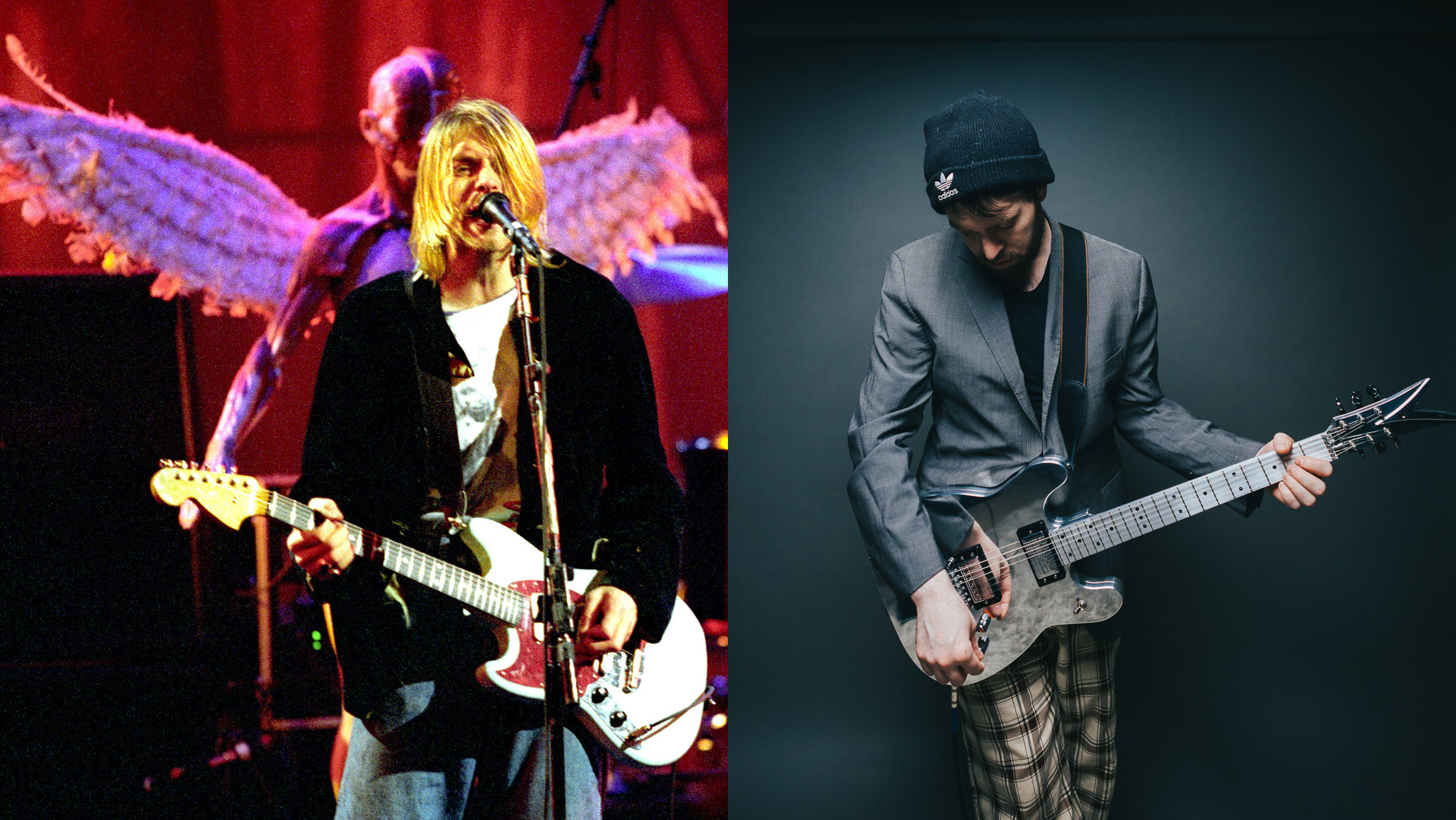
Born in California, growing up in Texas and now based in Seattle, Aaron Rash is a man of many talents and many of these have benefitted his YouTube channel, where he's gone deeper into Kurt Cobain's Nirvana tones than anyone else we've encountered. "I do a lot of electronics work like building amps, and microphones and preamps and EQs," he tells us via Zoom from his home studio space. "I've been an electronics nerd my whole life. So I spend most of my time doing that."
Although he listened to Nirvana from a young age, Aaron produced hip-hop in Houston for a while – we did say he was multi-talented – and producing a few promo music videos during that period of his life seemed to have honed his obvious skill for cinematography that helps make his guitar videos so engaging. The David Fincher fan shoots and edits all his channel's videos himself, but he admits his high standards can be a double-edged sword.
"I wish I could just pull out a cell phone and get a shot," he tells us. "But now I have to light everything and make it look good so I can continue like the theme that I've kind of set. So it sucks in some ways!"
Aaron's output is even more impressive because he isn't making a living from his YouTube channel and does it purely for the love. And he's amassed close to 48,000 subscribers along the way; many of them dedicated Nirvana fans seeking to understand more about Cobain's sounds.
"I've always loved Nirvana – grew up listening to Nirvana," he reflects. It's a relatable beginning for many from Generation X, for whom the band were a key inspiration in picking up instruments in the first place. But where things take a different turn is Aaron and his wife ended up moving to Seattle, and his interest in the band grew into something else…
"We went and saw his house and all the places, you know all the famous spots. And I don't know what happened to me, man, it just really grew on me. I started listening to them a lot because they were from here and I don't know, this connection happened."
One surprising revelation at this point is Aaron only started to take his guitar playing seriously at this point. " I just wanted to play guitar and see if I could come up with the same kind of sounds. And that's how it all started," he explains. Then Aaron hit the same wall many Nirvana fans do when trying to emulate Cobain's studio and live sounds.
Want all the hottest music and gear news, reviews, deals, features and more, direct to your inbox? Sign up here.
I really wanted to figure it out
"I realised, ok, if I buy this guitar, it's not going to sound like that," Aaron says. "And I was so confused. And that's when I started going down the rabbit hole of, why does his guitar sound like that? Why is his tone so unique? And it kind of took over. Honestly, I really wanted to figure it out. So that's how it started."
Aaron's investigations and personality make for fascinating viewing – he's great company in conversation too, and exactly the same genial self-effacing guy when we talk on Zoom as he comes across in his videos. Covering everything from playing through Jack Endino's super rare Fender Twin model Cobain used on Bleach to the missing links of the In Utero tone, Aaron's voyage of discovery also ends up teaching a lot of valuable lessons about guitar sounds in general alongside some genuine revelations for Cobain fans. Namely, the speakers matter a lot.
So join us as we take a deep dive into Kurt Cobain's tones, and the two ambitious projects Aaron has underway that will help more of us recreate them ourselves.
It's been a lot of trial and error, especially with buying different speakers
I think you've got closer than anyone to Kurt Cobain's tones – and people can hear this for themselves in your videos. But the key seems to be that you research with your ears as much as you do with online information. Is that fair to say?
"I've definitely researched with my ears. And that's what sucks because a lot of things you'll read online will say one thing, and then I'll get that one thing and try that. And then I can just tell that it's not the right information out there – the thing doesn't sound like that. And so it's been a lot of trial and error, especially with buying different speakers; Okay, these don't work – sell those. Now let's try these speakers. And doing that with everything until I find what it is [Kurt used].
"I have happy accidents where I just have an 'aha' moment and I try something and then that's it. But rarely does that happen. It takes a lot. A lot of money and time just experimenting."
You actually pointed this out in a video and I think it's important to reiterate. You're not in a privileged position – you're spending your own money because of your love for the music.
"Yes, I've had to finance all of this gear and stuff. But the cool thing about it is, with things like guitars, what you don't use you can sell and move on. I think a lot of guitar players I talk to, they're always selling a guitar to buy another guitar. Which is what I'm doing. I really want a vintage Jag right now so that is what I'm kind of going crazy over."
Have you got the signature Kurt Cobain Jaguar?
"This is one that I built on my own [shows us a remarkably accurate-looking Cobain Jag). Which is a really cool Jag, but I just really wanted a vintage one. But people will hate me if I route it out and do all the stuff to it. I know, I'll never hear the end of it. But it's something that I really want to do."

Something I went through when I was younger, and I'm sure I'm not alone in this, is you buy a Boss DS-1 and think it will make you sound like Nirvana. Looking back, it felt there was too much hearsay emphasis on the pedals and the guitars Kurt used, when your videos have illustrated what a huge part the speakers played in his sounds.
I found speakers make the most difference, especially for distortion tones – it's like night and day
"I think people do this with amps too. And I'm not saying that you shouldn't because every amp is different and it's going to affect the tone. But I found speakers make the most difference, especially for distortion tones – it's like night and day. And I've always thought about it like this: if you take white noise and you run it through a speaker, every speaker is going to have its own profile – they're all going to have their own sonic profiles. Distortion is just like white noise really – if you hear it without going through a speaker, it just sounds like trash, you know? And, so the speaker is really important."
It's the last part of the chain.
"Well there's the microphone, which is really important too. Which is another subject I want to get into on the channel. The guy that bought the microphones from Steve Albini that he used on In Utero, he messaged me on Instagram about making a video. But I think he's down in California somewhere. So we have to figure that out. But wouldn't it be cool?"
I've learned that the tone is in the cone
Very. And in the digital realm IRs are obviously something players can experiment with where they're getting captures of different cab and mic setups. A Nirvana IR pack is you're working on right now, isn't it?
"I've been spending all my time at Robert Lang's. It's a studio here in Seattle where Nirvana recorded You Know You're Right. And a million other awesome records have been recorded there.
"I became really good friends with Bob, and he's just so willing to help. I've been going up there and I got a crash course on the whole placet. And I'm gonna go up there, probably do it at nighttime when no one's there, so I'll stay out of people's way. But I'm going up there and I'm taking all of his microphones, everything – including the Quad Reverb [Fender amp].
"I'm going to just do a million impulse responses and make sure I capture [the gear I have] because I've had weird things happen with speakers where after playing like too much with fuzz, they don't sound the same anymore. It's really weird. So I started taking speakers apart [laughs]. And I've actually re-coned a few, which was really, really eye-opening for me. I've learned that the tone is in the cone, more so than anything. So I did weird things like taking the cones off of different speakers and putting them on other speakers. It's really weird stuff but it's really interesting."
That IR pack is going to be focussed on the In Utero sounds and that album has become a focus for you. And just to rewind back a bit for readers, one of the breakthroughs you made that is documented in your videos is that Kurt used a Fender Quad Reverb amp on the album, which is a rare amp in itself, but he also used the very specific speaker Utah spec iteration of the amp. How did you find out the truth?
He recommended Kurt get a Quad Reverb and I guess he must have really liked it because that's basically what In Utero mainly is
"I was talking to Ernie Bailey, who was Kurt's guitar tech, and he was just saying that they went and found it locally somewhere. He was [previously] playing those Fender Super Sixes, that are absolutely massive. He was playing two of those. So he recommended Kurt get a Quad Reverb and I guess he must have really liked it because that's basically what In Utero mainly is.
"I also talked with Bob Weston, who was the assistant engineer on the sessions, and he told me the same thing. Kurt basically tracked everything live through this Quad Reverb. And then he went back and did some overdubs. But most of that album is just the Quad Reverb really."
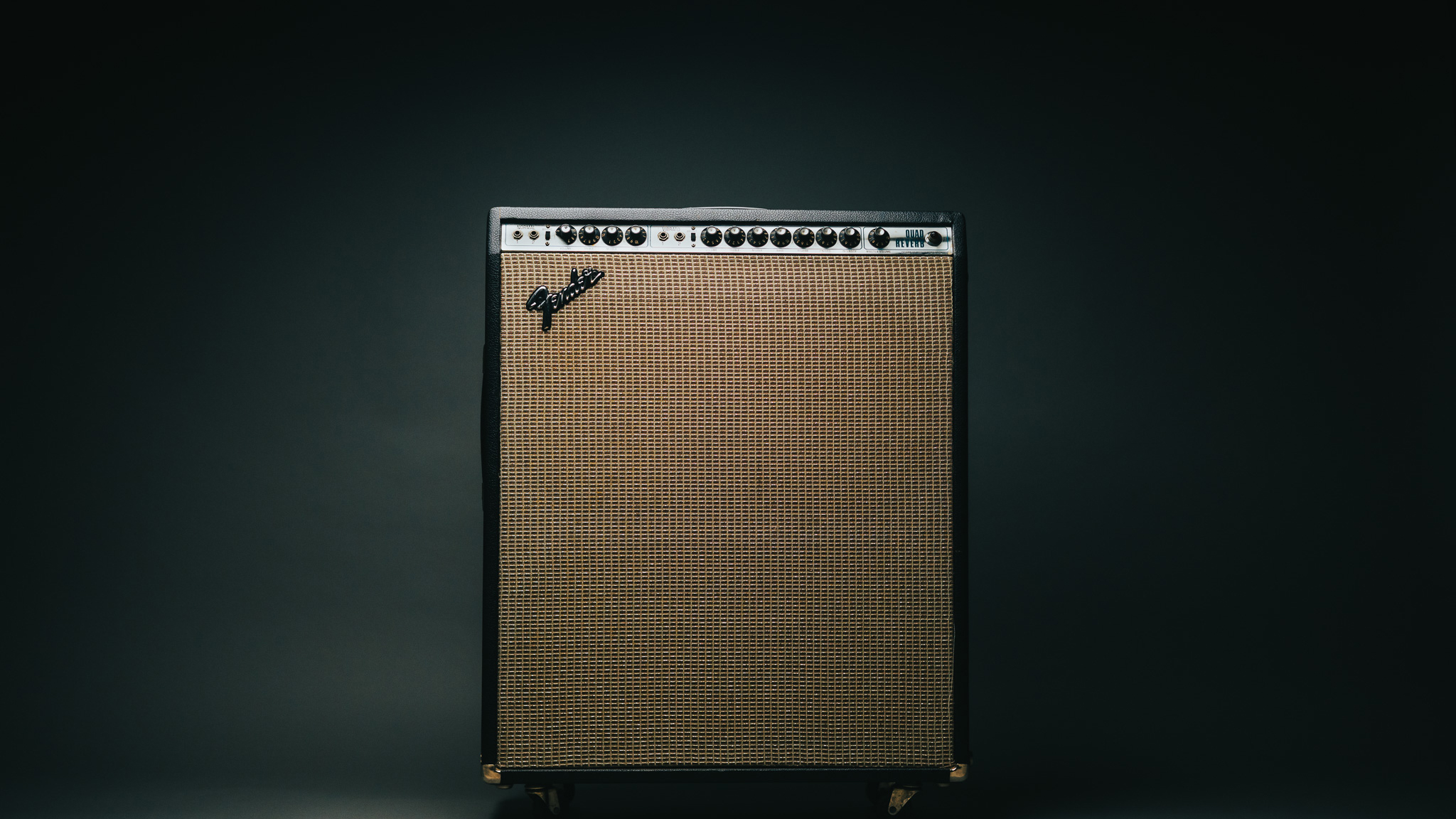

Kurt used another rare Fender iteration on Bleach with Jack Endino's unusual spec Fender Twin. Why do you think he gravitated to Fender combos?
"Here's what I think; Twin Reverbs and Quad Reverbs use the same circuit and were designed to be clean. So it was never really designed to distort, like a Marshall head would. But if you push them hard enough, they will distort and break up and they do it in a really nasty kind of way. It just sounds different than if you were to just take a Marshall and then crank it – it's more a mid-rangy, kind of boxy sounding almost. I think of the Quad as a very boxy-sounding amp – it's not high fidelity at all."
I really, really research all this stuff so much and I really put it to the test before I make videos
I did wonder if Earnie might have seen your videos.
"He said really nice things about my videos. And it's really cool just to be able to have kind of kind of a direct link to someone who knew what was going on. But a lot of the time I just like to talk to him about the Veleno [guitars] or Travis Beans because he's a huge aluminum guitar fan too."
Did he correct you on anything?
"No, but I know I have to have been wrong about some things. I would like to be wrong because it would just be more interesting but I really, really research all this stuff so much and I really put it to the test before I make videos."
Has talking to the people who were there working with the band been the greatest source of research or do they not tend to remember the specifics?
"Most people don't remember enough specifics. You know, I really wanted to interview Albini and we've talked about it a couple of times, but I know he's so busy. So he said a couple of times that he'd agreed to an interview. But I'm going to ask him the questions that no one else has, like, really technical things I've wanted to know about.
"Anytime I see any In Utero interviews with Steve, people tend to talk about what was the band like, or the business side. But I really to know what the preamp level was set at on the desk – how hard were you hitting the tape? Where? How many mics were on the cab? What mics were on the cab?"
The news that the Ferrington guitar Kurt ordered from Danny Ferrington as a custom guitar in 1992 was used on In Utero was a bit of a surprise. How did you discover that?
"I wanted to build a Ferrington-style guitar because on a Reddit Ask Me Anything thread, someone had asked Steve [Albini] what guitars Kurt used during the session. And he replied, his Musting, Jag, Univox Hi flyer – which he called a cheap pawnshop guitar. Then he said, a 'Mustang / Jag hybrid guitar', and 'my Veleno'.
"I knew that the Jagstang had not been made yet at that point so there was no way it could have been that – I think [him and Fender] had just started talking about it at that point. So that's when I got the bright idea – 'Hey, I'm going to try to build one of these Ferringtons. And it was really hard to hunt down the pickups in them. And this is good news actually, I'm glad you asked about this because when I built [the replica] I got a hold of these Bartolini pickups and there was no info anywhere saying, 'These are the Ferrington pickups', I just kind of had to shoot in the dark.
"And the ones I found sounded exactly like [the original Ferrington] and so Bartolini is now reissuing these pickups because of that. They're about to become available. They're sending me some to do some reviews on and now people are gonna be able to get hold of the pickups which is, in my opinion, probably the most important part of the sound of that Ferrington guitar. Those pickups are unique."

So that's another way Kurt's tones are now being made accessible to people, but building a replica body in the first place is no small achievement!
"I just went for it. I had a little bit of woodworking experience when I was a kid – when I was 12 I built a boat. It wasn't a really nice boat or anything but I went on the water and I floated. I didn't sink!
I've learned everything from just watching YouTube videos
"I really like working with wood and building things. I wish that I had a workshop or something. I'd be building a lot more guitars. I'm actually building a Mosrite Mk V – I've been trying to get this done forever. I got the neck done and the body shape cut out, I've just got to finish it. I need this to finish the rest of the Nevermind [video series] stuff.
That is above and beyond!
"I think a lot of people these days probably are building more guitars and stuff. It's just about I think having the right tools. I've learned everything from just watching YouTube videos."
Nevermind is an album where I've always presumed that it's hard to get the guitar sound because of the layering and production involved, especially compared to Bleach and In Utero. But your videos suggest that's not necessarily the case.
"Especially if you listen to the Devonshire mixes, those are the mixes that Butch Vig, I believe, did on his own and they're not too far off from the Andy Wallace mixes.
"So there's a couple of tones that have still baffled me. Come As You Are is such a weird tone. But I've heard Butch say several times that Kurt used his Mosrite for that, the MK V. So that's why I'm trying to finish building it because it's got a unique scale length – I think it's 24.5". And the placement of the pickups, it's kind of in a unique situation.
"So I know it's gonna sound really weird when it's done. Apparently though, this is what he used for Come As You Are. I won't be able to prove it yet but I know this; I've had everything else that he used for Nevermind, and I've never been able to totally nail that sound. So that is only thing that's missing."
And Nevermind is also where the 'Holy Grail' cab comes in that you made a video about.
"That is what I figured. And here's the thing, I could be wrong but I've tried so many different speakers and those Pulsonics really nailed the tone of Nevermind.
"Here's what I heard, and this is just hearsay, so I don't know if this is true or not. But apparently, the Bassman that they rented for Nevermind actually belonged to Mike Ness – the guitarist from Social Distortion. And I think Mike Ness also had a lot of vintage Pulsonic cabs. So there's maybe a possibility that Mike's cab and Bassman went out for Nevermind.
"I wish there was someone we could ask for this info. I saw this somewhere and I don't know if it's true or not. But it makes sense."
You also talk in your videos about the gain stacking approach Kurt used with his pedals and amps – namely the Boss DS-1 then the DS-2 Turbo Distortion with the Tech 21 SansAmp. Can you explain how someone can get started with combining those to get in the territory of some of his sounds?
"With the SansAmp, I think that Kurt always had this second in the chain. And the unique thing about the SansAmp, this was their original one just called the SansAmp, but they make a reissue now called Original that you can buy. These [originals] are kind of expensive, by the way.
That's when I had this moment – this had to have been what Kurt was doing
"Anyways, when these were originally designed, they were designed to be an amp simulator. So whatever you run through these, puts its own little sonic signature on this. So if you put a DS-2 in front of it, it's still going to SansAmp it, if that makes sense. Because if you play with a DS-2 Turbo Distortion by itself it's obviously very Turbo Distortion sounding. And I didn't hear much of that on In Utero. And it wasn't until I was really playing around with running it into the SansAmp and doing weird stuff THAT I was able to get certain sounds that I'd never been able to get before.
"That's kind of when I had this moment – this had to have been what Kurt was doing. And another thing is the Bass mode [on the SansAmp]. For Radio Friendly Unit Shifter – I still want to do a video on that – he was using it in Bass mode. It's uncanny – it sounds exactly the same. So I know he was playing with different modes and using this like a tone box.
"Another thing about the SansAmp is the output is really hot. Remember how I was talking about the Quad Reverb sounding really boxy when you overdrive it? Well, if you really turn this up you can get some insane distortion going on with the Quad distorting with this. So they kind of talk to each other and break up together. Well, it sounds like In Utero – it sounds exactly like it. It was a combination of a lot of stuff but you can't do it without this."
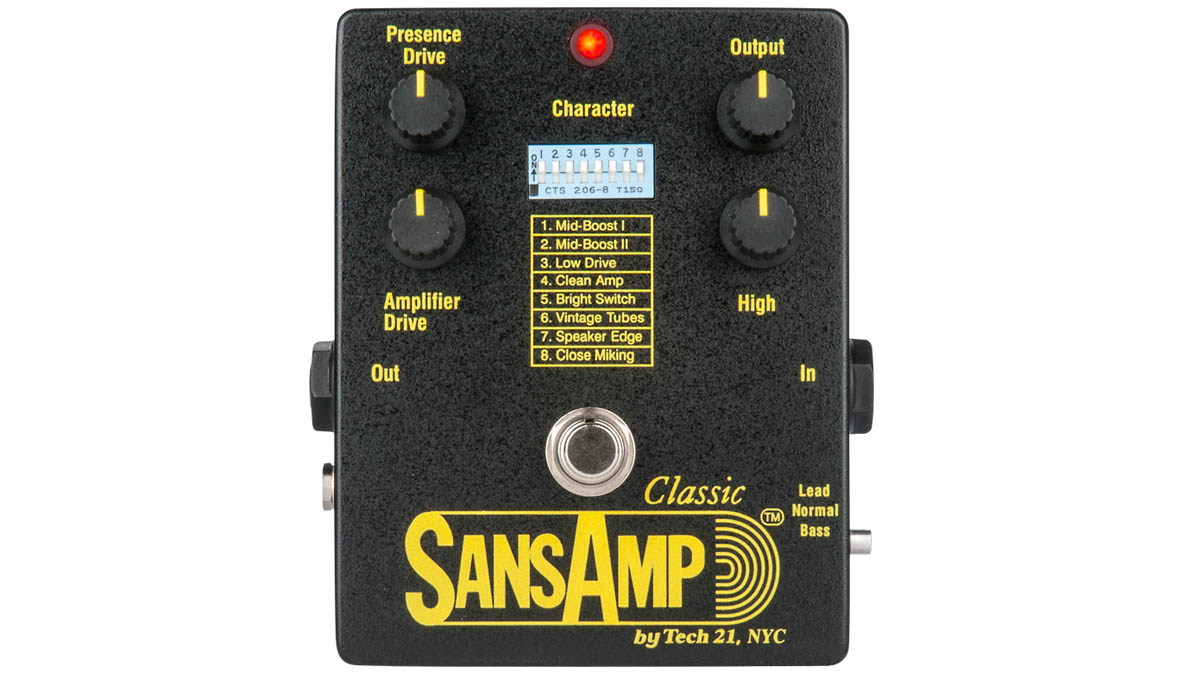
Would you recommend the DS-1 or the DS-2 for a Nirvana fan?
"I like the I like the DS-1 more. I think sounds better. The DS-2 does have a Turbo mode though which is cool. I don't use it, but it's like a really cool mid-boost."
Do you think Kurt ever used the Turbo mode?
"I don't think he did. I think he just used it like the DS-1."
So they're interchangeable, in a sense?
"They're really interchangeable. I just think the DS-1 sounds a little bit nicer."

What would you advise for amp settings with these pedals – how clean should they run the amp?
"That's the thing, if you listen to a lot of Kurt shows, it really depends. Sometimes he was going really clean. And sometimes you could tell he was just hammering his amp really hard. So I would set everything at around five and then just play with the volume gain on your amp and try it clean and also try distorting with the pedal.
Look at your amp as another pedal, instead of just an amp
"There's so many different kinds of weird sounds you can get. I think a lot of people think if you're using a pedal then you shouldn't distort your amp too, but you should – that's when you get really cool tones.
"So I think I think going into an amp and not looking at an amp as a clean platform thing, but just a second gain stage instead. Look at your amp as another pedal, instead of just an amp."
I think a lot of people are gonna get a lot of use out of it
Will your IRs eventually include Nevermind as well as In Utero to help players get closer to these tones?
"I'm going to do it all. I'll tell you this, I've already been messing with some of it. Just some little sample stuff I've done and it's blowing me away. Because I'm getting these kinds of sounds in my computer without doing anything. I'm not mic'ing up an amp or anything – it's so cool.
"So I'm really excited because I know it's going to work. When you set out to do something you don't know if it's gonna work or not. But I'm super excited. I also am really excited about just having this in a computer – having that sound that you can take anywhere. You can do it live, you can whatever, you know, I think a lot of people are gonna get a lot of use out of it."
What's your favourite guitar that Kurt played?
"Man, that's a hard one. Probably the Mustangs and Jag but I'm really obsessed with the Veleno too but that wasn't Kurt's. I know that Earnie said that towards the end there Kurt started asking a lot about aluminium [guitars]. So I think after using Steve's Veleno he wanted one. They just probably never found him one."

How do you feel about the Jag-Stang?
"I've only played one in Guitar Center. I've not been the biggest, hugest Jag-Stang fan because feel like they didn't finish it exactly how it was supposed to be done. The body shapes are a little skinnier and stuff but if you look at Kurt's sketches of how he wanted it to be, it was quite a different-looking guitar.
"So I think it would be cool to build a Jag-Stang in the way that he had wanted it done [initially] instead of how it came out. I've seen some people do it on Instagram and it's really cool."
Inevitably they were prototypes that he had.
"He didn't [get to] play it much [onstage]. I would think there were revisions he wanted, like the contours - just on the back, they didn't do that it was just a slab body [Cobain's consistent preferences live seemed to be towards contoured offset-bodied guitars].
"From what I read even I think they were still developing it, but they just never finished it before he passed away."

So we really need to talk about the aluminum guitar you've made, inspired by the Veleno Steve Albini owned that Kurt used to record parts for In Utero. That chambering of the body is very important isn't it?
"Yes, they're hollow body and they have such a unique sound. Gosh, this was so hard to get done – it was so hard to do.
And you had no aluminum guitar to inspect physically?
"That was the thing. I reached out to Steve and asked him if I could come and take his apart, measure it and do all that stuff. And he's like, 'Yeah, have at it'. And then I'd said, 'Okay, should I come at this time?' Then I never heard back from him. So I've gotten close to getting to Steve several times and then I just don't hear from him.
Steve Albini had told us in an e-mail that Kurt used one with Guild pickups
"I know he's busy and he was on tour. He was saying when I reached out, 'I'm on tour. But as soon as I get back in August, you can come by the studio and come look at my Veleno' or whatever.
"By the way, there's weird stuff surrounding his Veleno. A lot of people confuse and say that the one [Steve] has with P-90s was the one Kurt used. But Steve had told us in an e-mail that Kurt used one with Guild pickups.
"He owned three Velenos. And Earnie just recently told me that a Travis Bean was there [in the studio during the recording of In Utero] too. I don't think the Travis Bean got used [on the record] but Kurt was playing [around] with the Travis Bean as well. That was news, I'd never heard that before. But I know Albini had a Travis Bean Wedge. So maybe Steve brought it in and Kurt checked it out and chose the Veleno over the Travis Bean."
Were you working from blueprints of the original?
"No, I've just collected a million photos. This is how I built this; I found a photo that was pretty much straightforward. Then I measured the dimensions of the Guild pickup, and then I bought an original Guild pickup and measured it with a caliper. I was able to scale it all out in the computer and I was able to get the dimensions of the guitar and everything that way."
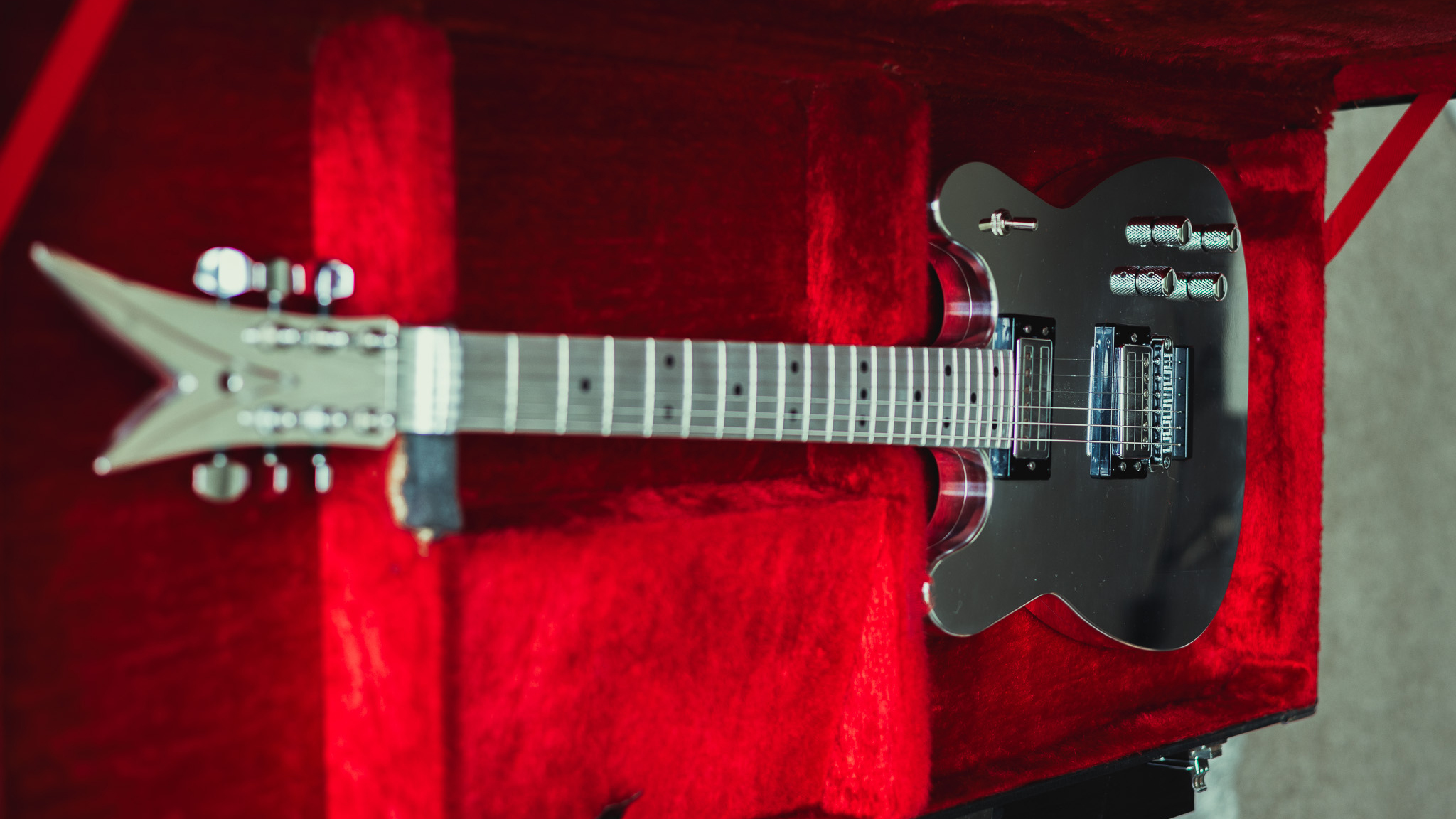
I was originally going to hire somebody, and I just I did it myself
So did you then need to take those specs to a company that specialises in aluminium construction?
I didn't know anything about CAD (Computer Aided Design). That's where you make a [computer generated] model of something to be built. So I called around everywhere saying, 'Hey, I'm trying to build this aluminum guitar, like, can you help me?' No one would return any of my calls. No one wanted any part of it. And then I got this one guy that was like, 'Sure, I'm going to help you make guitars'.
"So I went and saw him and told him what I wanted to do. And he's like, 'Okay, this is cool. But you've got to make CAD files'. So then I had to figure out how to do that. And then basically make an exact 3D model, which took me around a month to do. I did it on my own. I was originally going to hire somebody, and I just I did it myself."
That's incredible
"Just a lot of work. If you're determined to do anything, you can do anything. You've just got to put your mind to it.
"So I gave them those CAD files. And away they went. They cranked them out. I made three of these [guitars]."
So the plan is to produce more of them, it's called the Kurt guitar right now and you asked fans to vote on a headstock design? [see the video above]
"You know what though? I have another idea. Let me show you this really quick. And see if I can find it in here. This is what I want to do, but I don't want to get sued [Aaron shows us a new headstock emblem design depicting the In Utero angel outline]. I kind of thought last minute that maybe I shouldn't call it the Kurt.
"With the headstock I was thinking of making the [emblem] a cutout where the light shines through it."
"The whole reason I've got into this is I've wanted to make these affordable for people. I've tried as hard as I can, where I'm not going to be making much money off of it at all. And aluminum is super expensive right now.
"It's going to be out of some people's price range. And that's what really kind of bums me out because I want everyone to play these. And it's not for a profit thing or anything. I just love it. And I want to share it."
What are you going to do about the pickups?
"So I reached out to Guild actually. I think I can get them done with these Guild pickups – I think they can they can remake them for me.
"Another option, I think would be cool too is to put a [Semour Duncan] JB in one of these, it would sound crazy. That'd be a nice combination, but I think people are probably going to want to go for accuracy. So I was thinking of maybe having an option where you could choose, when you check out, what you want in it, and I'll put it in there."
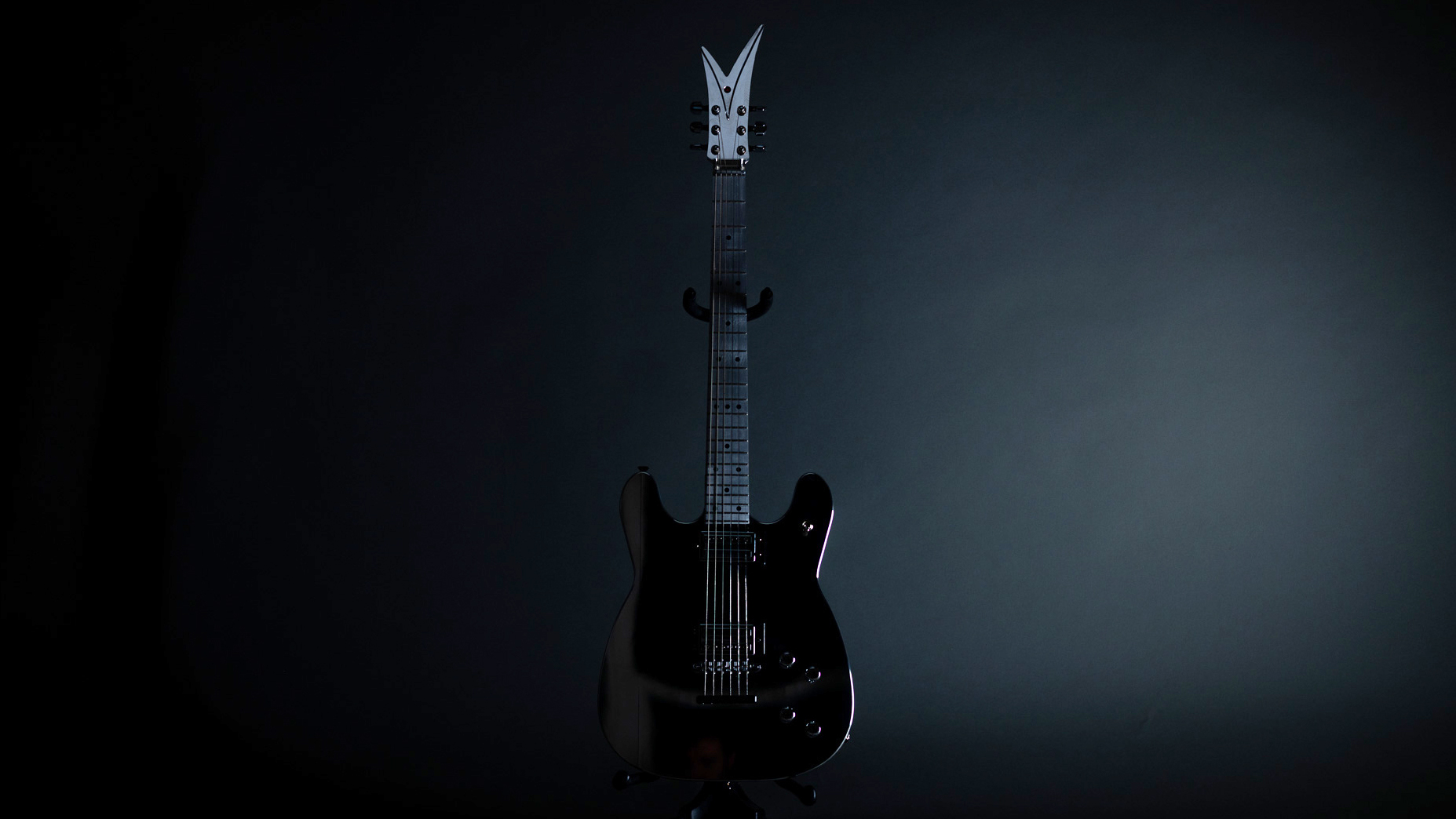
I really nitpicked because I was scared I was gonna spend all this money building this, and then I would get something wrong and it wouldn't sound right
Can you tell us about the aluminium neck?
"The frets are nickel and I made this an 11-inch radius like the original radius – early Velenos were 24.5 inch scale. And then they later went to 25-inch scale. So the newer reissue ones are 25 and 12-inch radius. Back when John [Veleno] was making them they were never 12-inch radius.
"I really nitpicked because I was scared I was gonna spend all this money building this, and then I would get something wrong and it wouldn't sound right or something. I really went crazy on it."
And it's lightweight?
"It's pretty light but the thing is, this one has a flaw of the original - this one has inherited it. You get a bit of neck dive. It's not too bad but it's there."
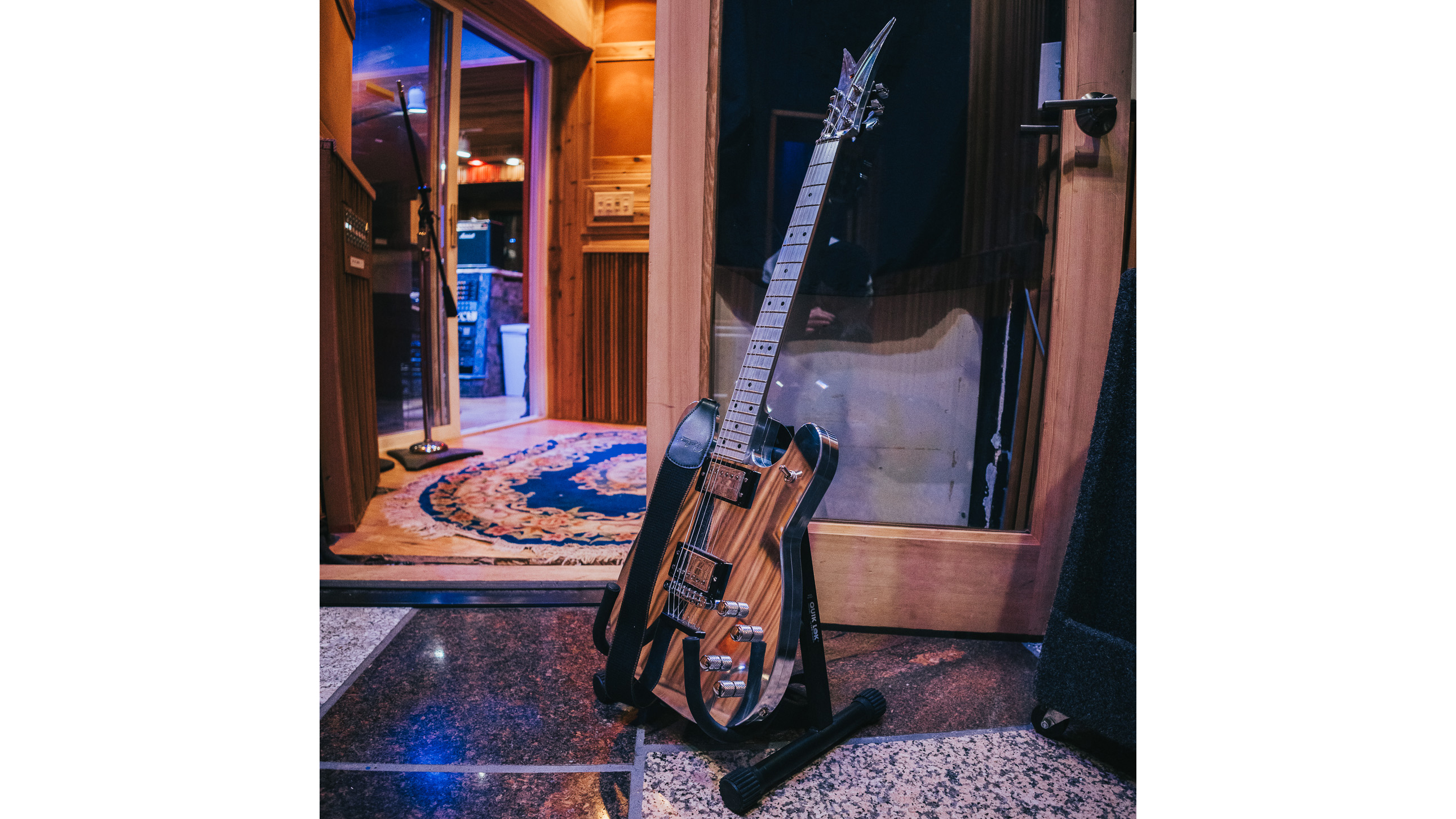
So this is another new avenue for you, because you're not making much money out of the YouTube channel and you don't currently do paid partnerships.
I'd rather just give all this information out as I learn it
"I haven't even wanted to start a Patreon. I've had so many people tell me to do that. And it's just always felt like the wrong thing to do. I don't want to make a Patreon. I understand I need support to keep doing this but another thing with the Patreon is you've got to come up with exclusive content for your Patreon people, and you got to give them information before you give it to anybody else. And it would just be too hard, I think, for me to try to be coming up with exclusive content for Patreon.
"I'd rather just give all this information out as I learn it, you know, and I'll make money off the IR responses. And hopefully these Veleno-style guitars are going to do well. I don't know how they're going to do and I'm so curious to see what's going to happen."
It's great because there's two very different things here that are equally important for getting closer to Kurt's sounds, and the IRs are very accessible to people.
"What I know is going to happen the moment these IRs come out, everybody's going to share them on their discords, and groups and all that kind of stuff, and it's just gonna get passed around is probably not going to be a hugely profitable thing, but it'll be worth it. But I think a lot of people that want to support the channel will buy the the IR pack."
Absolutely, and the time and work you've put into the project deserves to be recognised and recompensed.
"I really, really enjoy doing YouTube. It's a lot of fun. And I'm just curious to see what's going to happen – where it's gonna go from here. I don't know what it's gonna grow into but I'm really excited."
Are you heading towards the end of your Nirvana chapter with the channel or will you be going back and redoing some of the song deep dives with the information you've learned since?
The crazy thing for me is I never thought this channel would have got to where it is even now
"I think I'll always be coming back to Nirvana stuff regardless. But I'm going to try to start making other videos. I don't know if I necessarily want to dive down another band's tone or not, or maybe start just going on my own path. We'll just see what happens. But the crazy thing for me is I never thought this channel would have got to where it is even now. So already, for me, this is all beyond cool. Because I thought I would maybe get like 2000 subscribers or something and it just kind of became its own thing. And here I am talking to you."
I'm looking forward to seeing where you go next, and the speaker side of things that you've talked about is really interesting, aside from the Nirvana connections.
"I think it would be a good idea to dive into that and maybe microphones and just other stuff. But I'm always gonna, gonna be doing something that is inspired by Nirvana at least. Even if I'm not making every video a Nirvana video."
- For updates on the releases of the guitar and IR pack, subscribe to the Aaron Rash YouTube channel

Rob is the Reviews Editor for GuitarWorld.com and MusicRadar guitars, so spends most of his waking hours (and beyond) thinking about and trying the latest gear while making sure our reviews team is giving you thorough and honest tests of it. He's worked for guitar mags and sites as a writer and editor for nearly 20 years but still winces at the thought of restringing anything with a Floyd Rose.